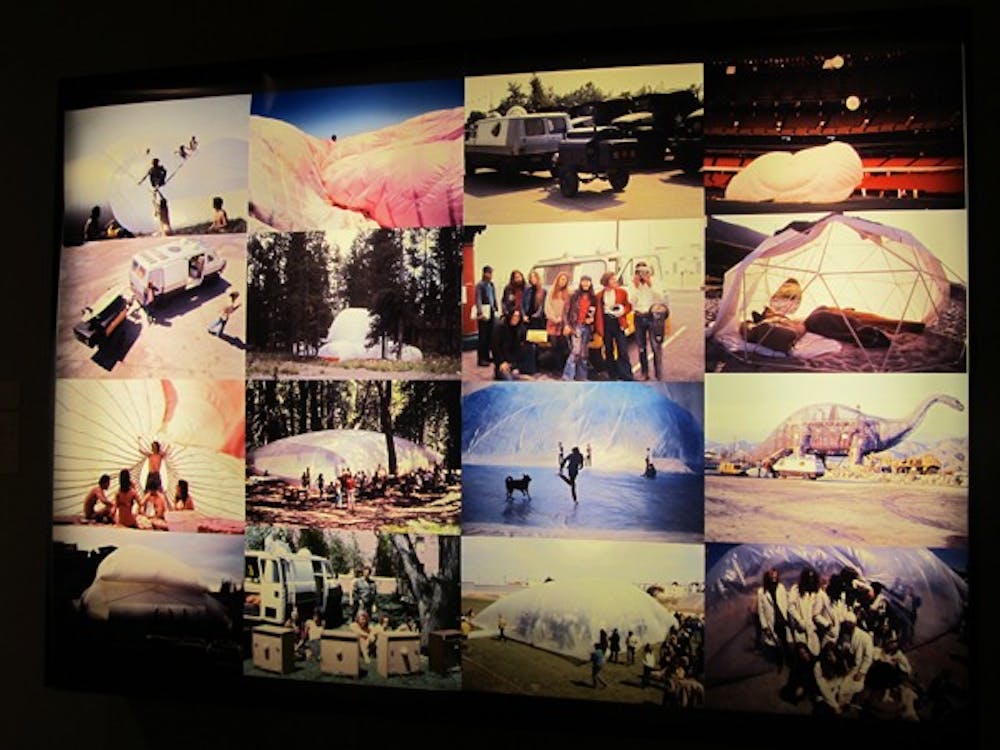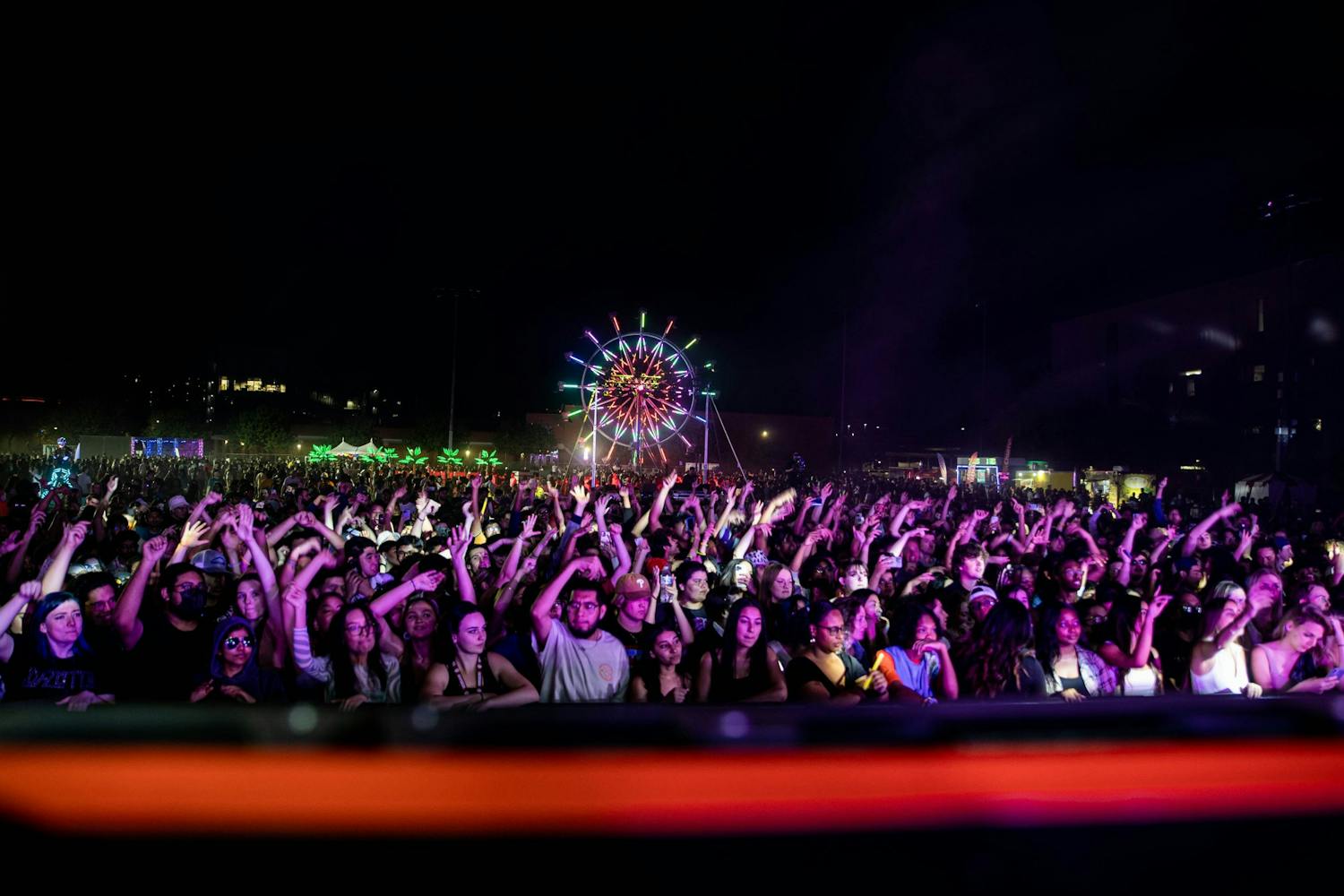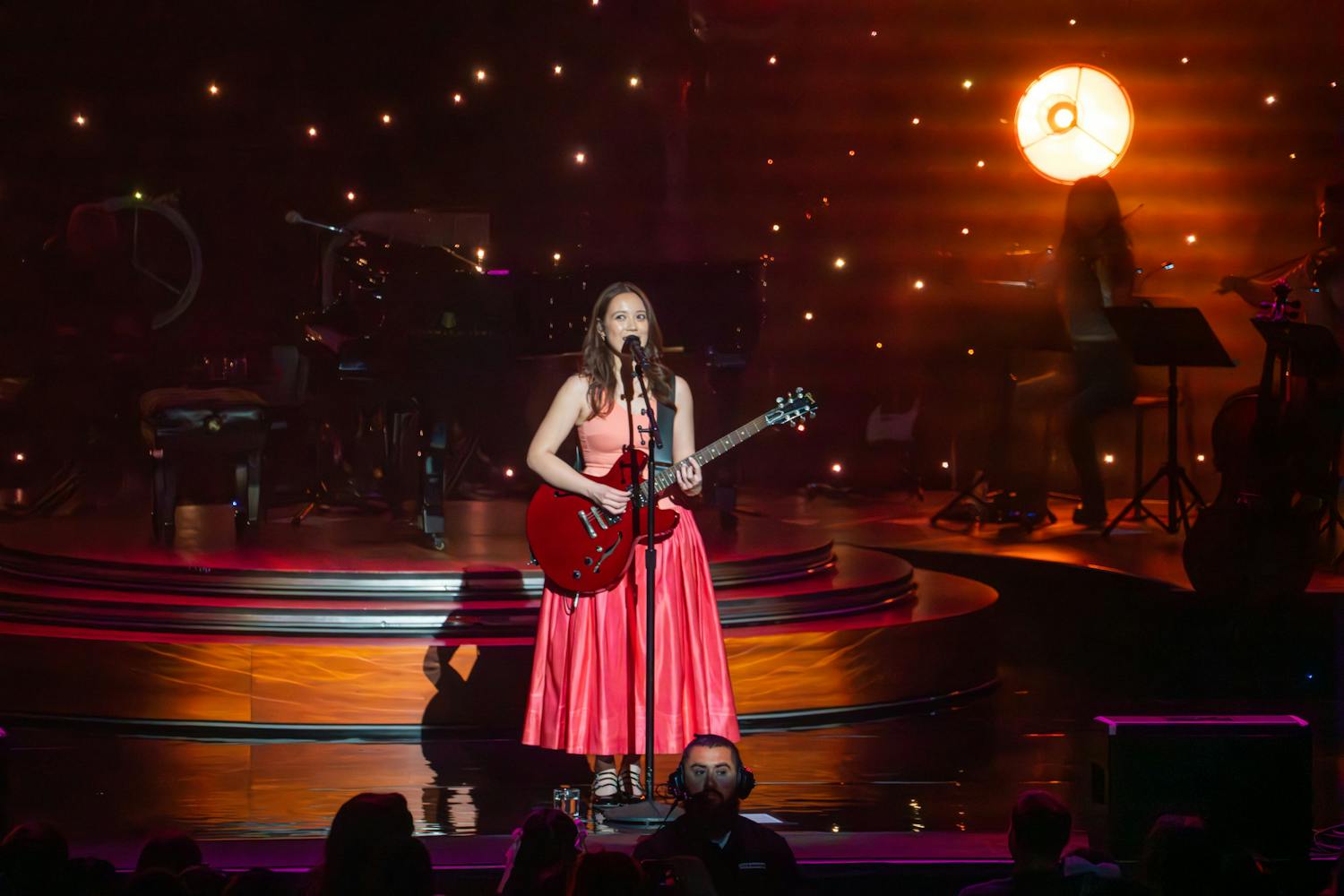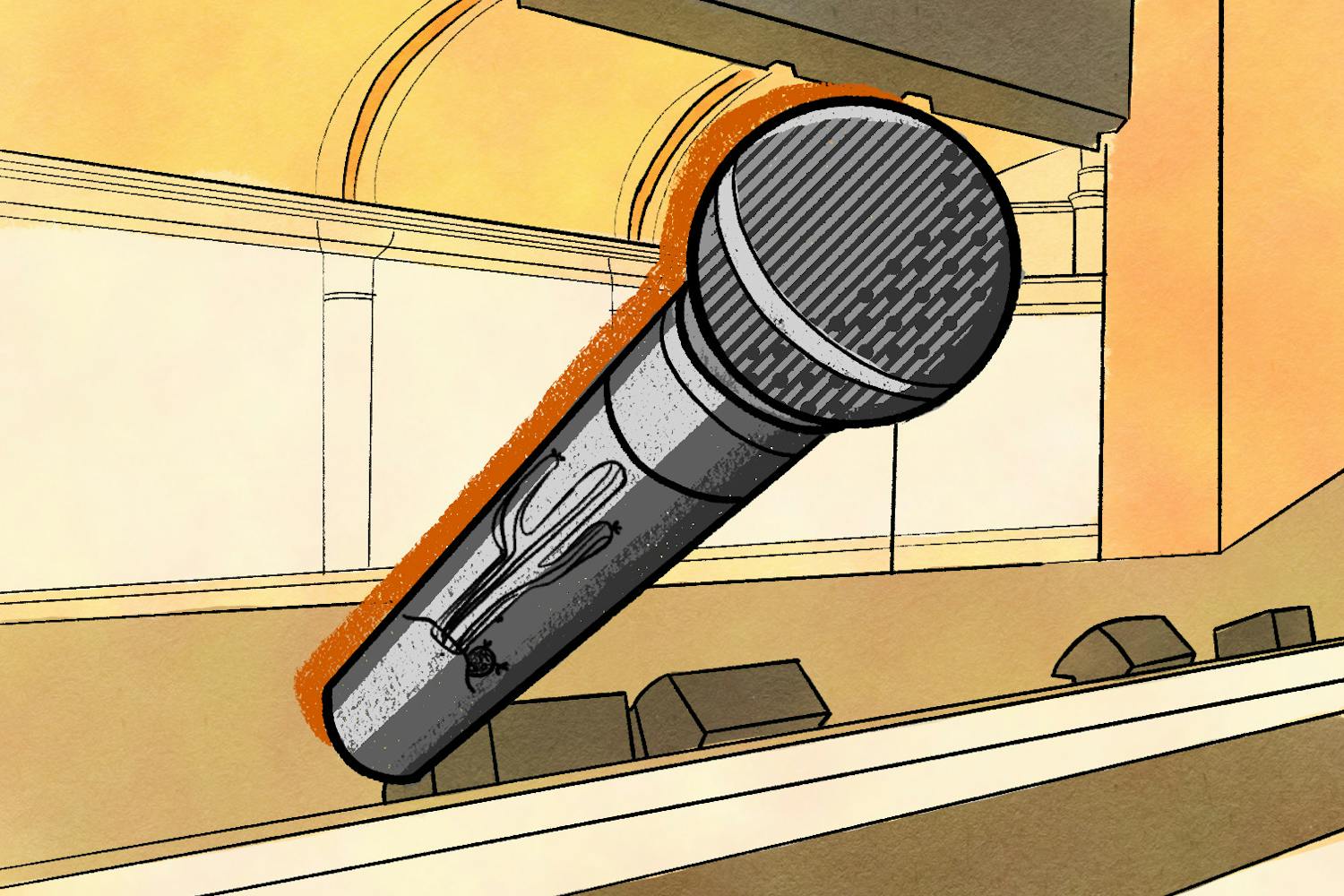 The Scottsdale Museum of Contemporary Art is currently displaying the exhibit "West of Center: Art and the Counterculture Experiment in America, 1965-1977" (Photo courtesy of Bill Timmerman)
The Scottsdale Museum of Contemporary Art is currently displaying the exhibit "West of Center: Art and the Counterculture Experiment in America, 1965-1977" (Photo courtesy of Bill Timmerman)Arizona may be a red state, but there are plenty of places in the Valley that teach more liberal point of views. Those in search of a shrine dedicated to hippie culture of decades past needn’t go any farther than Old Town Scottsdale, where the Scottsdale Museum of Contemporary Art (SMoCA) is currently showing “West of Center: Art and the Counterculture Experiment in America, 1965-1977.”
The traveling exhibition contains a variety of photographs, videos and replicas that pay homage to the counterculture of the late ‘60s and early ‘70s in western states such as California, Colorado and Oregon. The pieces are intended to portray “the art and activities of a small segment of extraordinary individuals in the American West, who illustrate the artistic relevance of the greater counterculture movement,” according to the exhibit.
The images and items in the exhibition show how the counterculture sought to break away from traditional and mainstream society and find "new ways to envision the world, create habitats, express sexuality and connect with others," according to the exhibit.
“The Dance of Anna Halprin” features videos of one of the most influential choreographers of experimental and postmodern dance in America. Halprin founded the San Francisco Dancers’ Workshop in 1955 and hosted workshops and classes at home outside of the city, where she built a large, outdoor deck for dancing. The exhibit says these workshops “transcended the traditional rules of dances and encouraged participants to develop through movement a heightened awareness of themselves, each other and their environment.” The exhibit contains a miniature deck that visitors can walk on and grab headphones to listen to the videos.
Two exhibits focus on the experimental architecture of communes of the period, “Drop City and Beyond” and “Ant Farm Inflatables.” Over 2,000 rural communes were formed in the U.S. in the ‘60s and ‘70s and Drop City, located in Trinidad, Colo., was the first to use geodesic-based dome architecture. Dome structures became a big part of counterculture mythos, and thanks to international media coverage of the commune, dome architecture became popular during the period.
“Ant Farm Inflatables,” features photographs of Ant Farm, a media-based collective founded in San Francisco in 1968 that believed architecture and media could be created by anyone using cheap, readily available materials, and that skills could be passed on from one person to another. Its members created inflatable environments at schools, conferences and festivals. In 1970, they toured the country in a van outfitted as a mobile television studio, taping their journey and demonstrating the inflatables. The exhibit also features a replica of the van’s interior, as well as an inflatable.
Another featured group is WomanShare Collective, whose photographs, books and other materials are displayed in the “Womyn’s Lands of Southern Oregon” exhibit. WomanShare was established in 1974 and was one of the more well-known feminist rural communities of the time. These communities put feminist principles into action, and its residents imagined life outside of the patriarchy. WomanShare endorsed communal living, the sharing of financial resources, bodily and sexual freedoms and “promoted an erotic relationship to nature through art and ritual.”
“The Posters of Emory Douglas” contains the work of minister of culture for the Black Panther Party, Emory Douglas. Douglas’s job was to design posters for the street and the party’s official newspaper. His art utilized a variety of visual techniques, such as photomontage to illustrate the political goals and philosophy of the Black Panther Party. His work calls for freedom from poverty, police brutality, racism and unemployment and the exhibit explains it illustrates “how the emphasis on freedom within the counterculture referenced a specific political agenda when applied to the civil rights struggles of African-Americans in the ‘60s and ‘70s.”
Perhaps the most visually vibrant of the exhibits is “The Cockettes & the Angels of Light” which uses photographs, video and flyers to highlight the work of the San Francisco-based performers. Described as part commune and part theater troupe, the Cockettes performed lavish stage acts at San Francisco’s Palace Theatre, where they maintained “little distinction between art and life, gay and straight, or male and female.” The Cockettes invented new forms of glamour, and their influence can still be seen today. In 1971, a splinter group, The Angels of Light of Free Theatre formed, carrying on the over-the-top style and blurring of gender and sexual boundaries into the late ‘70s.
Reach the reporter at jrpallas@asu.edu






